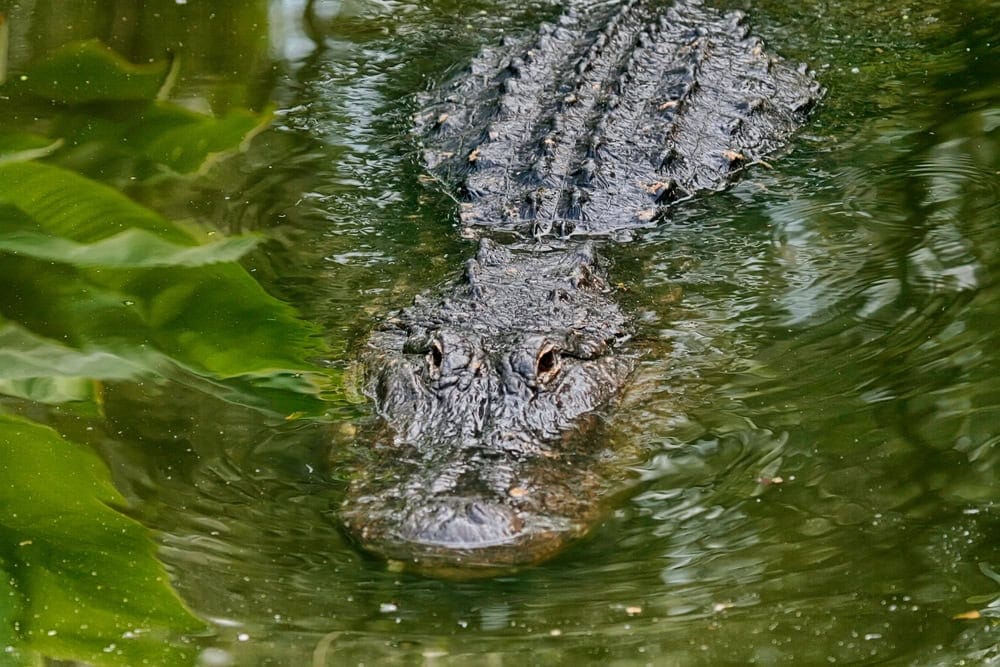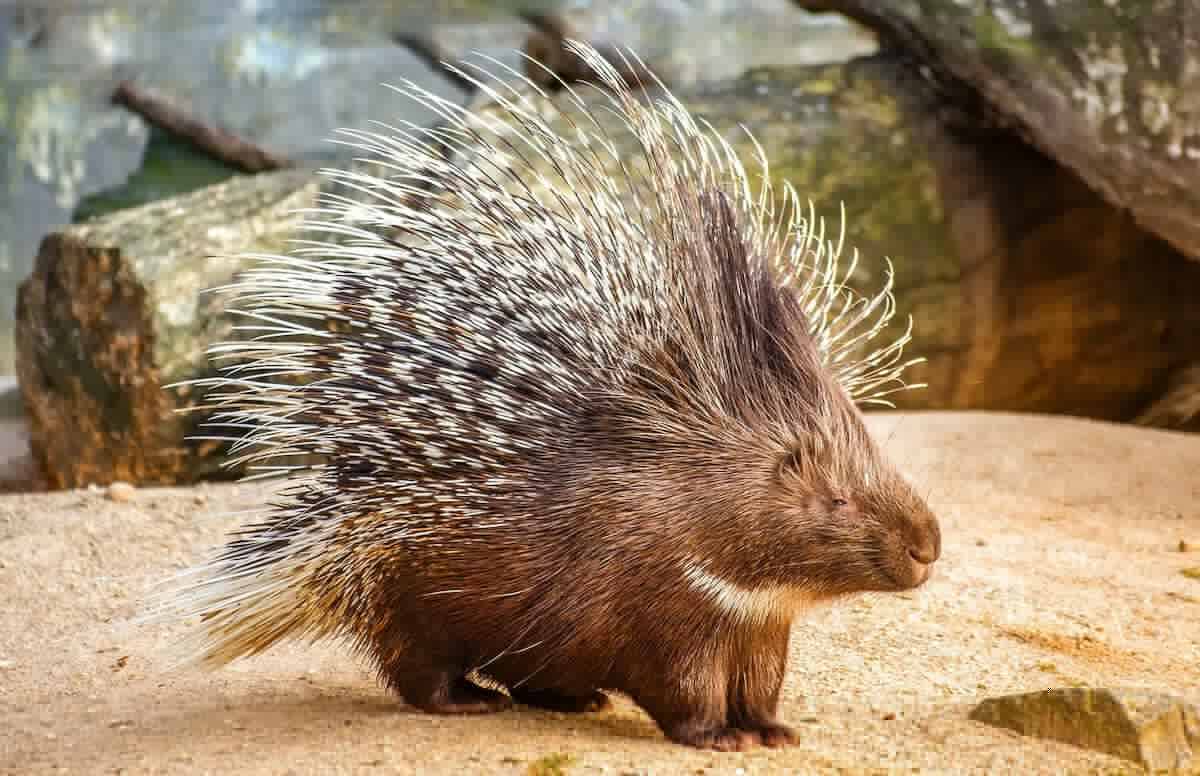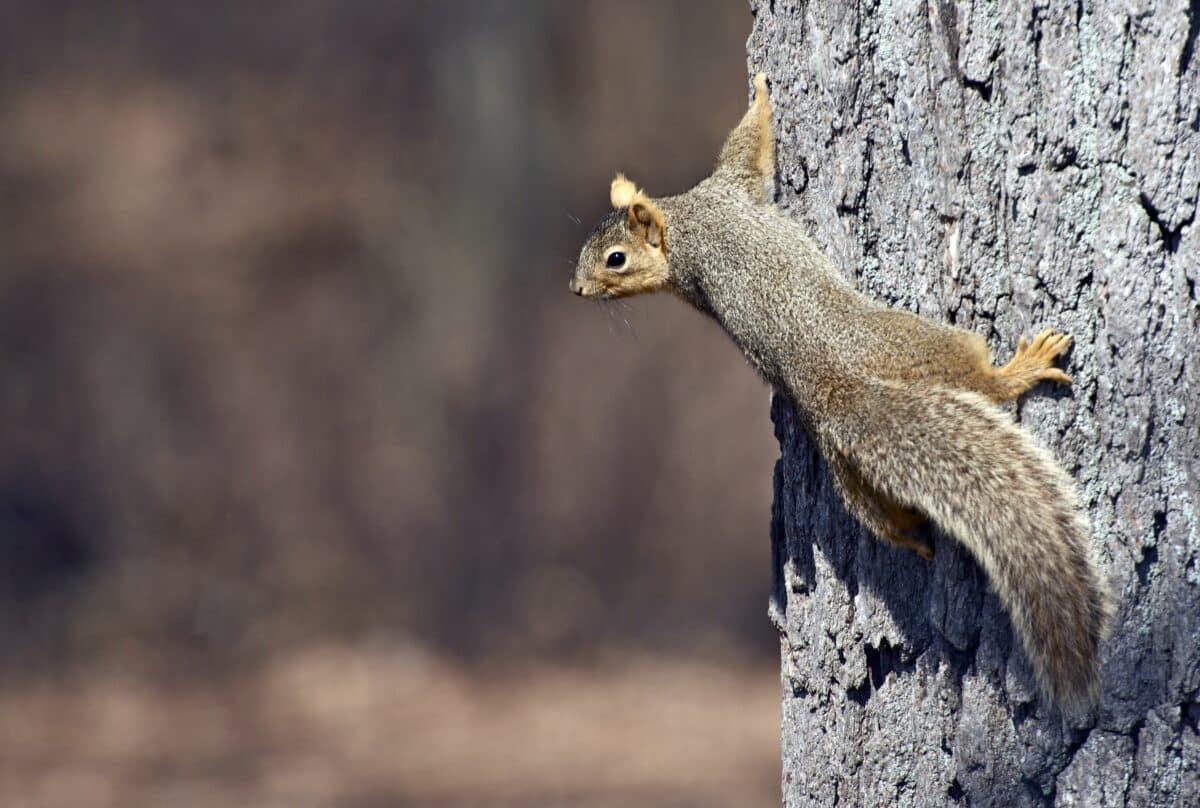In the digital age, our curiosity about the natural world often leads us to search engines rather than encyclopedias. Americans turn to Google with millions of wildlife-related questions every day, seeking to understand the creatures that share our planet. From wondering about bizarre animal behaviors to practical concerns about backyard visitors, these searches reveal our collective fascination with wildlife. This article explores fourteen of the most commonly searched wildlife questions in the United States, providing factual, educational answers to satisfy your natural curiosity.
Do Bears Really Hibernate Through Winter?

Contrary to popular belief, bears don’t truly hibernate in the technical sense. What bears experience is called “torpor,” a state of decreased activity where their metabolic rate and body temperature drop, but not as dramatically as true hibernators like groundhogs or bats. During torpor, a bear’s heart rate might slow from 40-70 beats per minute to 8-12 beats per minute, and their body temperature drops by only about 10 degrees Fahrenheit rather than approaching ambient temperature.
Bears can actually be awakened relatively easily during this period, unlike true hibernators. This misconception persists because the behavior serves a similar purpose—conserving energy during food-scarce winter months. Different bear species exhibit varying degrees of torpor, with black bears typically experiencing a deeper state than grizzlies or polar bears. Female bears even give birth and nurse their cubs during this state, demonstrating the remarkable adaptability of these animals to harsh seasonal conditions.
Why Do Wolves Howl at the Moon?

Wolves don’t actually howl at the moon—this is a persistent myth reinforced by popular culture. In reality, wolves howl as a form of communication, regardless of the moon’s position or phase. Their howls serve multiple purposes: to assemble the pack, signal locations to other pack members, define territory boundaries, and strengthen social bonds. A wolf’s howl can carry for miles in open terrain, making it an effective long-distance communication tool in their natural habitat.
The misconception about howling at the moon likely originated because wolves are more active at dusk and during the night when they hunt. When they howl with their heads tilted upward, it enhances sound projection—similar to how humans might tilt their heads back to project their voice. On clear nights when the moon is visible, it creates the perfect backdrop for this behavior, leading to the folkloric association between wolves and the moon. Scientific studies have actually found no correlation between wolf howling frequency and lunar cycles.
Are All Snakes Venomous?

No, not all snakes are venomous—far from it. Of the approximately 3,900 snake species worldwide, only about 600 (roughly 15%) are venomous, and of those, only about 200 species have venom potent enough to significantly harm humans. In the United States, only about 20 species are considered dangerous to humans, including rattlesnakes, copperheads, cottonmouths, and coral snakes. The vast majority of snakes Americans might encounter in the wild pose no venomous threat whatsoever.
Venomous snakes typically have specialized features like fangs and venom glands that evolved primarily as hunting adaptations rather than defense mechanisms. Non-venomous snakes use other methods to subdue prey, including constriction (like boas and pythons) or simply overpowering smaller prey with their jaws. Learning to distinguish between venomous and non-venomous species in your region is valuable knowledge, as many non-venomous snakes provide important ecological benefits like rodent control. Unfortunately, harmless snakes are often needlessly killed due to fear and misidentification.
Do Opossums Really Play Dead?

Yes, opossums genuinely “play dead” when threatened—but it’s not an act. This behavior, known as thanatosis, is an involuntary physiological response triggered by extreme fear. When an opossum feels severely threatened, it enters a catatonic state where it becomes limp, its breathing slows dramatically, its tongue lolls out, and it secretes a foul-smelling substance from its anal glands that mimics the smell of decomposition. This state can last from a few minutes to several hours, effectively fooling predators that prefer live prey.
What makes this behavior particularly fascinating is that it’s not a conscious decision but rather an automatic response controlled by the opossum’s nervous system—similar to fainting in humans. This defensive mechanism evolved as an effective survival strategy against predators that lose interest in prey that appears to be dead and decaying. While “playing possum” is their most famous defensive trait, opossums are also remarkably resistant to rabies due to their low body temperature and have a natural immunity to the venom of many snake species, making them unique among North American mammals.
Can Beavers Really Change Ecosystems?

Beavers are among the few non-human species that dramatically modify their environment to suit their needs, earning them the title of “ecosystem engineers.” By building dams across streams, beavers create ponds and wetlands that transform the surrounding landscape. These structures, constructed from branches, mud, and stones, can be remarkably sturdy—sometimes extending more than 100 feet in length and lasting for decades when maintained. The resulting ponds create rich habitats for countless other species, from fish and amphibians to birds and insects.
The ecological benefits of beaver activity are substantial and far-reaching. Their dams slow water flow, reducing erosion and flooding downstream while improving water quality by filtering out sediments and pollutants. Beaver ponds recharge groundwater supplies, maintain water levels during drought periods, and create wetland environments that act as carbon sinks. Recent conservation efforts have actually reintroduced beavers to certain watersheds specifically for these environmental benefits. A single beaver family can transform acres of habitat, demonstrating how one species can have disproportionate effects on entire ecosystems.
Why Don’t Birds Get Electrocuted on Power Lines?

Birds can perch safely on power lines because they don’t complete an electrical circuit. Electricity travels along the path of least resistance, and when a bird sits on a single wire, it’s not providing a pathway for the current to flow to the ground or to another wire with a different voltage. The electricity continues along the wire, bypassing the bird completely. This is why you’ll often see birds resting comfortably on high-voltage power lines without any ill effects.
However, birds aren’t always safe around electrical infrastructure. If a bird touches two wires simultaneously or touches a wire and a grounded object (like a pole), it creates a circuit, allowing electricity to flow through its body, resulting in electrocution. This is a significant cause of mortality for larger birds like hawks and eagles, whose wingspans are wide enough to potentially contact multiple wires. Power companies often install protective measures in high-risk areas to prevent these accidental electrocutions, especially for endangered raptor species. The physics that allow birds to safely perch on power lines is the same principle that makes it dangerous for humans to touch electrical wires—it’s all about completing circuits.
Do Deer Really Freeze in Headlights?

The phrase “deer in the headlights” accurately describes a real phenomenon. When suddenly illuminated by bright lights at night, deer often become temporarily immobilized or disoriented rather than fleeing. This response stems from their evolutionary adaptation to nocturnal vision. Deer have eyes with a high concentration of rod cells that excel in low-light conditions but become overwhelmed by sudden bright light. The intense glare from headlights essentially blinds them temporarily, causing the animal to freeze until its vision can readjust.
This freezing response may also have evolved as a predator-avoidance mechanism—in nature, staying perfectly still might prevent a predator from detecting movement. Unfortunately, this natural response is maladaptive on roadways, contributing to approximately 1.5 million deer-vehicle collisions annually in the United States. Wildlife biologists recommend that drivers who spot deer near roads at night should slow down and, if safe to do so, temporarily switch from high to low beams, which may reduce the immobilizing effect and give the deer a chance to move away from the roadway. Some areas have implemented wildlife crossings and warning systems to reduce these dangerous encounters.
Are Alligators and Crocodiles the Same Thing?

While alligators and crocodiles belong to the same order (Crocodylia) and share a similar appearance, they are distinct animals with several key differences. The most noticeable visual difference is in their snouts: alligators have broader, U-shaped snouts, while crocodiles have longer, more V-shaped snouts. When an alligator’s mouth is closed, you typically can’t see its lower teeth, whereas a crocodile’s lower fourth tooth remains visible even when its mouth is shut. Crocodiles also tend to have a lighter, olive-green or grayish color compared to alligators’ darker, almost black appearance.
Beyond physical differences, these reptiles have different habitats and temperaments. American alligators primarily inhabit freshwater environments in the southeastern United States, particularly Florida and Louisiana. Crocodiles have a more extensive global distribution across tropical regions and can tolerate saltwater environments thanks to specialized salt glands. Behaviorally, crocodiles generally display more aggressive tendencies toward humans than alligators, though both should be treated with extreme caution. These ancient reptiles have existed for over 200 million years, surviving the extinction event that eliminated dinosaurs, making them remarkable evolutionary success stories regardless of their differences.
Do Porcupines Shoot Their Quills?

Contrary to popular belief, porcupines cannot shoot their quills as projectile weapons. This is perhaps one of the most persistent wildlife myths in North America. In reality, porcupine quills are modified hairs that are loosely attached to the animal’s skin and detach easily when they make contact with a potential threat. The quills have microscopic barbs that cause them to embed deeply in the flesh of predators, making them extremely difficult and painful to remove.
When threatened, a porcupine will display defensive behaviors like chattering its teeth, emitting a warning odor, and raising and rattling its quills. If these warnings fail, it may back toward or swat its tail at a predator, which is when quills transfer on contact. The myth of “shooting” quills likely persists because the transfer happens so quickly it can appear as though the quills were projected. Each porcupine has approximately 30,000 quills, which are gradually replaced when lost. For animals that prey on porcupines, like fishers, mountain lions, and coyotes, a face full of quills can lead to infection, starvation, or death if the predator cannot remove them.
Why Do Owls Rotate Their Heads So Far?

Owls can rotate their heads up to 270 degrees (three-quarters of a full circle)—an adaptation that compensates for their fixed eye position. Unlike humans, whose eyes can move independently of their heads, owl eyes are fixed in their sockets and cannot move. This means that to change their field of vision, owls must move their entire head. This extraordinary neck flexibility gives them a massive visual advantage when hunting, allowing them to scan their surroundings without moving their bodies and potentially alerting prey.
The owl’s remarkable neck contains several anatomical adaptations that make this extreme rotation possible without damaging blood vessels or cutting off blood supply to the brain. Their neck vertebrae have specially adapted socket pivots that allow for greater movement, and their carotid arteries (which supply blood to the brain) have small reservoirs at their base. Their blood vessels are also larger at the neck base, compensating for any constriction during rotation. Additionally, the position of the jugular veins creates air pockets that enable the owl’s blood flow to continue even during extreme head turns. These specialized adaptations demonstrate nature’s incredible engineering to solve the challenge of combining binocular vision with the need for a wide visual field.
Can Animals Predict Natural Disasters?

There is compelling evidence that some animals can detect signs of impending natural disasters before humans notice them. Prior to earthquakes, unusual animal behaviors have been documented, including snakes emerging from hibernation, birds abandoning their nests, and normally nocturnal animals appearing during daylight hours. Scientists believe animals may sense preliminary tremors, changes in air or groundwater pressure, or detect subtle gases released from the earth before a seismic event. Similarly, researchers have observed elephants, flamingos, and other animals moving to higher ground before tsunamis strike.
While these behaviors suggest predictive abilities, the scientific community remains divided on whether they constitute true “prediction” or simply detection of early warning signs that humans can’t perceive. Some species have specialized sensory adaptations that might explain these behaviors: elephants can detect infrasonic sound waves through their feet, birds are sensitive to barometric pressure changes before storms, and some fish can detect minute electrical field variations. The Chinese city of Haicheng successfully evacuated before a 7.3 magnitude earthquake in 1975 partly based on observations of unusual animal behavior, saving thousands of lives. Today, researchers continue studying these phenomena to potentially develop biological warning systems that could complement technological disaster prediction methods.
Do Squirrels Remember Where They Bury Their Nuts?

Squirrels have remarkably sophisticated spatial memory systems that help them relocate their buried food caches. Gray squirrels can create thousands of caches per season—a behavior called “scatter hoarding”—and studies show they can remember the locations of these caches for months. Their success rate for retrieving their own buried nuts ranges from 20-80%, depending on the species and environment. Rather than relying solely on memory, squirrels use a multi-faceted approach that includes spatial mapping, landmarks, and even scent detection.
Interestingly, squirrels employ strategic techniques when burying their nuts. They’ve been observed engaging in “deceptive caching” behaviors—pretending to bury food when being watched by potential thieves. They’re also known to organize their caches by food type, a behavior called “chunking” that demonstrates sophisticated categorization abilities. Despite their impressive memory capabilities, squirrels don’t recover all their buried nuts, which makes them important forest regenerators—many trees and plants sprout from forgotten squirrel caches. The hippocampus (the brain region associated with spatial memory) enlarges seasonally in some squirrel species during food-caching periods, showing how their physiology has evolved specifically to support this critical survival behavior.
Why Don’t Woodpeckers Get Headaches?

Woodpeckers hammer their beaks against trees at astonishing speeds—up to 20 pecks per second—and forces that would cause severe brain damage in humans. Each impact subjects the bird’s head to decelerations of approximately 1,000 g-forces (humans can lose consciousness at just 4-6 g-forces). Yet woodpeckers do this thousands of times daily without any apparent brain injury or concussion. This remarkable ability comes from several specialized anatomical adaptations that have evolved specifically to protect their brains during this high-impact behavior.
The woodpecker’s skull contains a system of adaptations working together as natural shock absorbers. Their skull bones are spongy and flexible, especially at the forehead, distributing impact forces away from the brain. A specialized “hyoid apparatus”—a bone-and-muscle structure that wraps around the skull like a seatbelt—further stabilizes the brain. Additionally, woodpeckers have minimal cerebrospinal fluid between the brain and skull, reducing the brain’s movement during impact. Their chisel-like beaks are made of dense bone covered with keratin, and the upper and lower parts of the beak have different lengths, directing impact forces away from the brain. These adaptations have inspired biomimetic designs for sports helmets, car bumpers, and other shock-absorbing technologies in human engineering.
Conclusion: The Endless Curiosity About Wildlife

Our collective fascination with wildlife reveals much about our connection to the natural world. These common questions Americans ask Google every day demonstrate our inherent curiosity about the creatures with whom we share our planet. The answers to these questions often reveal remarkable adaptations that have evolved over millions of years, showcasing nature’s ingenuity and complexity. From the woodpecker’s shock-absorbing skull to the beaver’s ecosystem engineering, wildlife continues to inspire both wonder and scientific discovery.
- 10 Animals That Could Make a Comeback Through Cloning - August 20, 2025
- How Darwin Frog Fathers Carry Their Tadpoles in Their Throat - August 20, 2025
- 11 Animals That Lived With Dinosaurs - August 20, 2025

